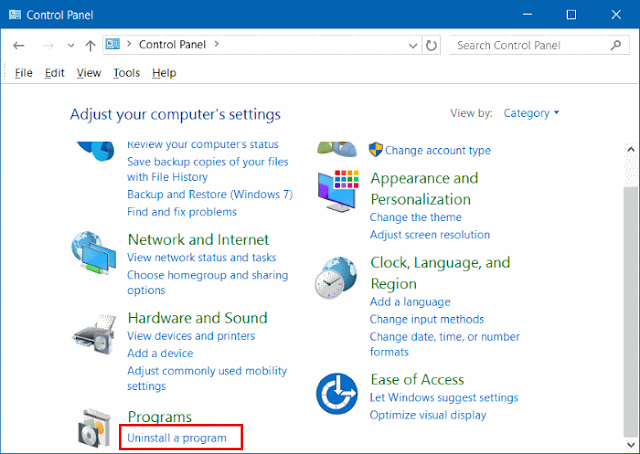Keep Receiving Pop-ups Asking to Call (877) 766-2717 & (877) 761-2498? What to Do?
Those pop-ups claiming something like "your computer has been blocked with error" or "hard drive will be deleted" are combination of scammy and nasty. So are those from hxxp://deniedaccess668890.com/cY1TZ/index.php urging you to call (877) 766-2717 & (877) 761-2498. It could be well beyond annoying that these alerts reporting "WARNING! Explicit content on popup (porn)" keep overtaking your webpage, freezing up your screen and preventing normal surfing.
Pop-ups with virus infection or error code information are designed to cause distress and help the swindlers to sell computer users questionable service or low-quality products. When you are asked to call 877-766-2717 & 877-761-2498, never rash to following the points. You should know that Microsoft does not ask for computer users’ personal or financial information to fix their computers via sending unsolicited email messages or making unsolicited phone calls.
You should neither be taken in by this alert with unsolicited phone number and act irrationall, nor provide any personal information with those people pretending to be certified. The pop-up Adware asking you to call (877) 766-2717 & (877) 761-2498 can modifying your browser settings stealthily and activate malicious java script codes. So you will constantly run into this security warning. To avoid potential damage, you should carry out technician scam removal timely. You could try the following steps if necessary.
Plan A: Clean up (877) 766-2717 & (877) 761-2498 pop-ups Automatically with SpyHunter (For Win OS)
Plan B: Purge (877) 766-2717 & (877) 761-2498 pop-ups Automatically with MacKeeper (For Mac OS)
Plan C: Remove (877) 766-2717 & (877) 761-2498 pop-ups Manually from your computer
Plan A: Remove (877) 766-2717 & (877) 761-2498 pop-ups Automatically from Win OS with SpyHunter
SpyHunter by Enigma Software Group LLC is a spyware detection & removal tool providing rigorous protection against the latest threats including malware, trojans, rootkits & malicious software. It will not only update malware detection and removal definitions daily, but also offer you free technical support and custom fixes for hard-to-kill malware with limited interaction.
Step 1. Click the following icon to get malware removal tool SpyHunter and install it on your computer


Step 3. Get rid of all detected items by clicking "Fix Threats" button
Plan B: Clean up (877) 766-2717 & (877) 761-2498 pop-ups Automatically from Mac OS with MacKeeper
MacKeeper has impressive features: *** Search and solve, that offers you information about cleaning, the performance and the security of your computer. *** Internet Security, a module that once installed protects you against malware. *** Antitheft, to locate your Mac in case of theft. *** Expert at hand, thanks to which you can get in touch with specialists. Therefore, if you want a program that allows you to have full control on your Mac's security, this is the tool you need. |
Step 1. Download MacKeeper and get it installed to your Mac by following the on-screen tips.

MacKeeper can do more than erase all sorts of internet threats and allow you to have full control on your Mac’s security. If you have any problem using this tool, you could get in touch with specialists from its Geek on Demand feature.

Plan C: Remove (877) 766-2717 & (877) 761-2498 pop-ups Manually
Step 1. End malicious processes generated by this Ad
Right click on the taskbar and select Start Task Manager. Navigate to Processes tab, search for malicious processes and suspicious ones, choose them and click “End Task”.

On Mac OS:
Choose Force Quit from the Apple menu, or press key combination (Command + Option + Esc) to open the Force Quit Applications window to do this.

Step 2. Uninstall unwanted application that bundled with this Ad
On Windows Computer:
Win 7: Go to the “Start” menu, select “Control Panel”. Locate “Programs”. If there is anything related to this scam pop-up on the list of your Programs, then select it and uninstall it.

Windows 10/8:
- Right-click the Start button (or Open Win+X Power menu), tap on Control Panel
- click Uninstall a program, right-click on the program that you want to remove from your Windows and then click Uninstall button.


On Mac:
Go to the Launchpad, search for suspicious application, click and hold its icon with your mouse button to continue.

Step 3. Reset your affected browsers one by one
Google Chrome:
Click the Chrome menu on the browser toolbar and select Settings:
a) Scroll down to the bottom of chrome://settings/ page and click Show advanced settings
b) Scroll down to the bottom once again and click Reset Settings

Internet Explorer:
a) Click Start, click Run, in the opened window type "inetcpl.cpl".
b) Click "Advanced" tab, then click Reset.

Mozilla FireFox:
Open Firefox->> choose Help ->>choose Troubleshooting information
a) Click on Reset Firefox. Choose Reset Firefox again to make sure that you want to reset the browser to its initial state.
b) Click Finish button when you get the Import Complete window.

Edge:
a) Click the three horizontal dots in the upper right corner of the Edge window and choose "Settings". b) Under Clear browsing data, click "Choose what to clear" and then click "Show more". c) There are a lot of data types here. Select them all and click "Clear".

Safari
a) Open your Safari browser from the dock.
b) Click on Safari in your Safari menu at the top of your screen.
c) A drop-down menu will now appear. Choose the option labeled “Reset Safari…”

Specially Remind:
Anything taking a hand in your browsing and messing up things like (877) 766-2717 & (877) 761-2498 pop-ups should be eliminated in a timely fashion. If you are puzzled by the manual removal steps, you could feel free to get assistance from SpyHunter (For Win OS) or MacKeeper (For Mac).



No comments:
Post a Comment